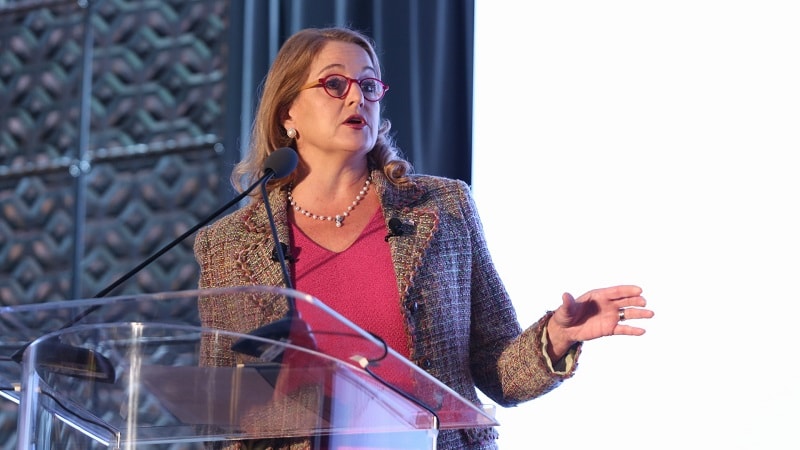
Former Federal CIO Suzette Kent said today that upskilling the Federal workforce is a “foundational linchpin” to the government’s developing strategy to move toward the adoption of more advanced and automation-driven technologies.
Speaking at an event hosted by ACT-IAC, Kent said “There’s a little bit of chaos right now, but I want to walk through a little bit of the why.”
“Our workforce is the core of every one of the missions that that happens in government,” she said. “Our government is aspiring to have a leaner Federal workforce and reduce dependence on contractors.”
“They want to maximize the value of some of these commercial off-the-shelf, hardened platforms – platforms that globally can be used across many different agencies for common purposes,” she continued.
Kent said there has been “repeated focus” on the widescale enterprise use of automation, AI, and data, adding, “When you stack all those together, if you don’t talk about the last piece of the puzzle, which is the workforce that knows what to do with all that stuff, and knows how to behave in that environment, you’re not going to achieve those other things.”
In the government’s mission to pursue the use of those kinds of technologies, she said, “We have to pay attention to that last foundational linchpin, which is taking the people who understand the mission and making them capable, competent, and proficient … on those new tools, and make sure that they have a pathway to continue to enhance their skills at the pace that the technology is changing.”
The Federal CIO for much of the first Trump administration and now CEO of her own Kent Advisory Services firm – she referenced during her discussion a study going back to 2020 that looked at AI and automation. Kent hammered home the point of properly training the workforce to take advantage of those tech advances.
Citing the study’s findings, she said, “If we don’t upscale and invest in the skills of the individuals when we deploy advanced technology, we actually not only hamper performance, in some cases we create other problems.”
“So, you’re kind of advancing the ball, but if you don’t invest in the workforce, not only do you not get the value, but you create the problems,” she said.
Elsewhere during her remarks, Kent said that same lesson also applies to the private sector’s use of technology.
Speaking from experience with over 30 years in the private sector and government, she said, “When there is significant technical debt, there is often significant knowledge debt, and sometimes I found inside government, even [though] we had great tools, we had an absence of pathways for continuous learning and upskilling to use those technology tools.”
“When you have the tool, if you don’t have the knowledge – and not just the tech and IT staff knowledge but those who are applying the capabilities – if you don’t have that knowledge, you don’t get the value out of the tool,” Kent added.
“There are amazingly talented members of the Federal workforce who I watched with some of the programs that we put in place [and] these opportunities to learn new skills and equip themselves,” she said. But, Kent emphasized, “We have to keep doing that. We have to make it not just a one-time project. That needs to be deeply embedded in the activities of bringing emerging technology” into the government.
